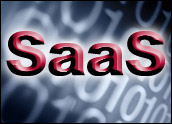
There was a time when customizing enterprise software was a long, drawn-out, often painful affair. Then along came Software as a Service, recalls Dan Druker, senior vice president for Intacct, an on-demand financial management and accounting application.
It was really easy for Ingres — a provider of open source database software and one of his company’s early clients — to integrate and then customize a joint Salesforce.com-Intacct implementation.
“All they had to do was configure the interface to decide whether they wanted certain business processes — such as the quoting process — to reside in Salesforce.com or Intacct,” Druker told CRM Buyer. Click, click and save. Job over.
That was nearly two years ago, when SaaS was evolving from the one-off implementations that had characterized its beginnings. Firms were beginning to realize that Web-based applications could provide a significant portion — if not the entire backbone — of their IT operations.
Ease of customization contributed in a big way to that growth spurt, according to Druker. “Because the Internet is always on, companies began to demand the ability to assemble different applications together to get a snapshot or dashboard view of how a company is performing at any point in time. Nor did they want to go through the hassle of an extensive customization to do that — plug and play was what they expected.”
Indeed, “customization” stopped being an appropriate word a few years ago — at least for the SaaS environment, Ken Rudin, CEO of LucidEra, told CRM Buyer. “The word is really ‘configure,'” he said.
“A user logs onto an administrator screen and fills out certain fields, depending on what he wants,” Rudin explained. “The first types of configurations were about the user interface or the order of icons on the screen.”
The next wave was about workflows. “Then the fields starting giving you options about how to configure a certain process,” he continued. “Click here if you want employee A to do this when that happens, and so on.”
The challenge for on-demand vendors up to that point had been to make sure they were providing enough options, he said.
Fast-forward to two years after Ingres’ introduction to the latest SaaS configuration technologies. A lot of companies have digested the mashups, dashboards and other user interface design tools that surfaced since then. Now, they’re getting set to absorb the wave of innovation that vendors have delivered to the market over the past six to nine months.
Platform Wars
Salesforce.com, of course, is leading the vanguard, with its rollout of Force.com — a Platform as a Service offering that allows developers to create their own applications and user interfaces. There are many moving parts to this offering, including Visualforce, which allows users to build a user interface entirely in an on-demand environment, and the Apex programming code that allows companies to run business logic processes or rules.
Netsuite, another major SaaS vendor, introduced its version of a development platform this year as well: NetSuite Business Operating System, or NS-BOS. This offering is built on NetSuite’s SuiteFlex — a platform for customization, verticalization, integration and business process automation introduced a few years ago.
To be sure, a look under their respective hoods shows that there are significant differences between the two: Salesforce.com uses proprietary code, while NetSuite emphasizes an industry standards-based platform.
Specifically, NetSuite uses industry standard JavaScript as the basis for its programming capabilities, allowing developers to create applications — called “suitelets” — that leverage the NetSuite user interface or a different UI, if desired.
Independent software vendors and value-added resellers, meanwhile, have been leveraging NS-BOS to offer NetSuite industry-specific editions — the ultimate in customization — for government service contractors, high-volume e-commerce operators and EDI system integrators.
Intra-industry squabbles aside, it is clear that SaaS’ next big innovative leap will be to give customers all the tools they need to design their own changes.
Agile Frameworks
The latest series of SaaS platforms and tools provide a very agile framework for businesses to customize what really matters — the information, not the infrastructure, Len Couture, managing director of the CIO practice at Bluewolf, told CRM Buyer.
For instance, tools in the platform allow developers and consultants to customize an application in a “sprint” — say 10 different changes at once, present those changes to the decision makers, and then move on to the next series of changes.
In Salesforce.com’s product lineup, that tool is Sandbox — a separate on-demand application environment for development and testing.
“Getting immediate feedback that way and then building on those approved changes allows us to configure or customize a SaaS application much more deeply and faster than before,” Couture said.
The ability to change a system on a dime has become a reality. “We are seeing a much shorter time framework for delivering a successful customization,” he said.






















































The problem with SalesForce and most of these other tools is that they lock you into their proprietary architecture, making it impossible to deploy the application behind the customer’s firewall. Further, the cost structure is so high that the only company making a profit is SalesForce.
I recommend taking a look at development environments, such as http://www.Eclipse.org that are open-source; well-known environments such as http://www.Microsoft.com and SaaS application environments such as http://www.SaaSWizard.com, that support a hybrid model.
The key point with all these products is that you can purchase licenses outright and either deploy as a SaaS service or install behind the customer firewall for tight integration with back-end systems.